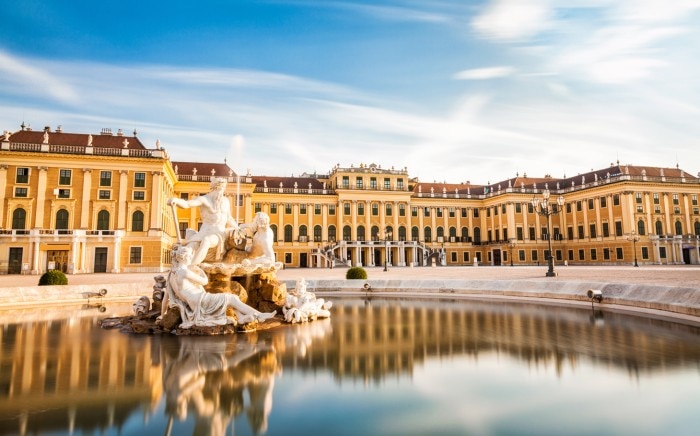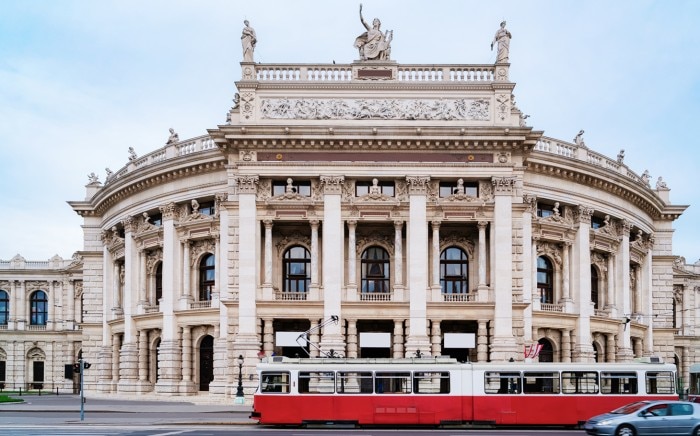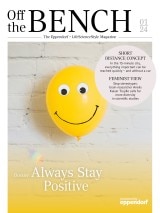You are about to leave this site.
Please be aware that your current cart is not saved yet and cannot be restored on the new site nor when you come back. If you want to save your cart please login in into your account.

Vienna - With Charm and Cream
Explore Life Science
- Off the Bench
- Exploring Life
Vienna without a visit to a coffee house? Only half the fun! The coffee houses in the Austrian capital are more than just places to eat, they are a second living room and a cultural institution – as well as an oasis of slowness. A stroll.
The Viennese culture of idleness
The fact that this traditional coffee house, one of more than 1,000 in Vienna, is brimming with activity almost around the clock, showcases how important the culture of idleness is to the city and its inhabitants. These oases of coziness and comfort are a part of Vienna, just like the famous schnitzel or the giant ferris wheel in the amusement park Prater. In 2011, UNESCO even declared the coffee houses of Vienna an intangible cultural heritage. In this cozy atmosphere, people drink a “small black coffee”, mocha, no sugar and milk, or a mélange which is reminiscent of cappuccino. They read newspapers suspended from a wooden hanger, or they simply do nothing. After all, there is enough to see: inside the Café Schwarzenberg, the wood panel walls, petite marble tables and impressive crystal chandeliers recall the turn of the century. Nothing much has changed since its opening in the year 1861. Of course, the cake inside the glass showcase, steeped in golden light, is always fresh.
With all this comfort and coziness, who would want to move along? But one must also pay a visit to the Café Sacher. It is located only a few minutes’ walk from the Café Schwarzenberg, close to the Vienna State Opera and the Hofburg Wien, residence of the Habsburg dynasty from the 13th century to 1918. The smell of horse manure, at times noticeable on the way to the Café Sacher, originates from the Spanish Riding School which is connected to the Hofburg. This is where members of the royal family were instructed in riding – exclusively on Lipizzans – white stallions. White is also the color of those horses that are harnessed to the traditional carriages, known in Vienna as “Fiaker”, which await their customers outside the entrance to the Hofburg and other central locations in Vienna.
The Café Sacher, located inside a corner Renaissance building, is easily recognized by the long lineups forming outside its door. Everyone is here to enjoy a piece of the namesake pastry that Chef Franz Sacher had baked for his employer, Prince Metternich, in 1832. In the mornings, one stands a good chance of being led to a table in this elegant room, which is reminiscent of a plush living room, without much of a wait. The walls are covered in coral red damask, with countless mirrors framed in ivory color, and the stucco under the high ceiling bears witness to the splendor of the fin de siècle. The chocolate cake with apricot jam and glistening dark-brown surface is particularly delicious when one is enjoying it seated comfortably on the red-upholstered circumferential bench.
Fortified by caffeine and cake, one is now off to explore the neighboring Palace Garden, planted around 1818 for Emperor Franz I in the style of an English landscape garden. From here, it is not far to the Café Demel by the Kohlmarkt. This coffee house is famous most of all for its sweet cakes and pastries, for strudel and candied violets – Empress Elisabeth’s favorite flowers. This café delivered sweets to Sisi and her husband, Emperor Franz Joseph – which explains the name “k.u.k. Hofzuckerbäckerei” – “k.u.k.” stands for “kaiserliche und königliche” – “imperial and royal”. Waitresses in black-and-white traditional dress still address the guests in a peculiar third person plural: “Have had a chance to choose?”, or: “Would like to see the menu?” This is known as Demel-German – a polite form of address dating back to the times of the monarchy.
Read more
Read less

Our next destination is most likely the best-known coffee house in Vienna, the Café Central. Its rooms are located in the neoclassic Palais Ferstel inside the former Vienna Stock Exchange. One’s gaze wanders past the cake display, towards the dome supported by countless marble pillars. At the end of the 19th century, the beautiful café located in Herrengasse was home to mostly artists and writers: Arthur Schnitzler, Oskar Kokoschka, Stefan Zweig, Leon Trotzki, Robert Musil, Hugo von Hofmannsthal, and also Sigmund Freud who lived only a fifteen-minute walk from the Central. Today, his former home has been converted into a museum.
The Café Sperl, on the other hand, was frequented mostly by composers and painters; after all, this heritage café is located in the 6th district, not far from the city’s theaters – which means it is also a little removed from the city center with its tourists. In the smoke-yellowed room, Thonet armchairs, marble tables and imposing gas lamps welcome the visitor. Here, too, guests enter what Stefan Zweig described as a club where one “can sit for hours and discuss, write, play cards and, most of all, consume an unlimited number of newspapers and magazines.”
Read more
Read less
A marble piano on the grave of Udo Jürgens, a pink sculpture by Franz West, and a granite obelisk on the grave of Beethoven: the Vienna Central Cemetery is a place of peace and quiet for more than 330,000 people, among its lilac bushes and old beech trees. With its spectacular graves of honor, it is also reminiscent of an open-air gallery. Visitors have the option of exploring this park measuring almost two-and-a-half square kilometers on their own or participating in guided tours.
Simmeringer Hauptstraße 234, 1110 Wien

The Imperial Butterfly House in the Burggarten palace gardens is considered one of the most beautiful glass Art Nouveau buildings in the world. The amazing butterfly zoo is located in its west wing. At a constant temperature of 26 degrees, several hundred tropical butterflies whir around here, among them the large tree nymph with a black marking on its wings. At the sight of these peaceful, gorgeous creatures amidst the exotic plants, near a waterfall, Kaiser Franz Joseph is said to have found tranquility in his day.
Butterfly House Burggarten Hofburg, 1010 Wien

A 250-meter-long sandy beach, a water playground, a huge trampoline area, a whitewater channel for kayak-tours, and a climbing park: a visit to the Danube Island promises relaxation and fun for the entire family. This artificial island within the City of Vienna and Klosterneuburg is used as a part of flood management, raised between 1972 and 1988. Since then, it has served as a worthwhile destination for outings, located only 20 minutes from downtown Vienna. Its green surroundings invite all visitors to unwind from the impressions of the big city.
Donauinsel, 1220 Wien

Eppendorf in Vienna
Read more
Read less

